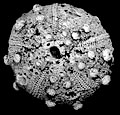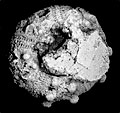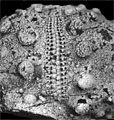The Echinoid Directory
Parvicidaris Smith, 1994, p. 194
| Diagnostic Features |
|
|---|---|
| Distribution | Late Triassic; Peru and western Canada. |
| Name gender | feminine |
| Type | Parvicidaris microapicalis Smith, 1994, p. 195, by original designation. Holotype; Smithsonian Institution, Washington USNM465266. |
| Species Included |
|
| Classification and/or Status |
|
| Remarks |
|



